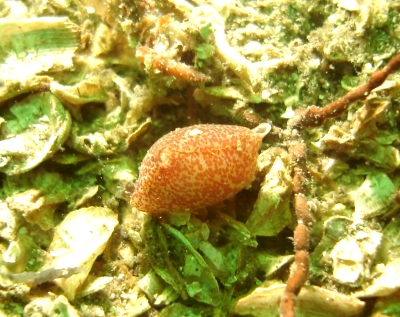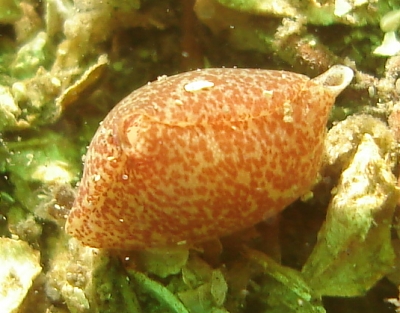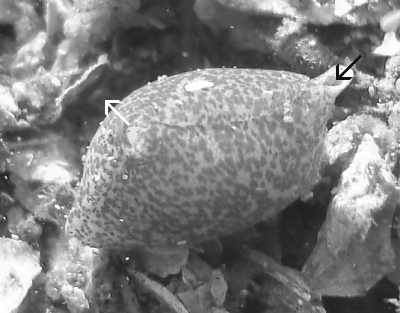Benthic behaviour Gastropteron pacificum
March 23, 2007
From: Jackie Hildering


Hello Bill,
Saw 16 different nudibranch species on this shore dive today. One of many highlights was seeing +/- 7 Gastropteron pacificum "swimming." I had the good fortune to be able to track one animal as it settled to the bottom and got this photo. Any information about the "oral groove like" structure protruding from its anterior end would be much welcomed.
Locality: Bear Cove - Port Hardy, 40 ft, British Columbia, Canada, Pacific Ocean, 20 March 2007, mud bottom. Length: 2 cm. Photographer: Jackie Hildering.
Jackie
earthlingenterprises@telus.net
Hildering, Jackie, 2007 (Mar 23) Benthic behaviour Gastropteron pacificum. [Message in] Sea Slug Forum. Australian Museum, Sydney. Available from http://www.seaslugforum.net/find/19738
Dear Jackie,
Thanks for this interesting photo. Sitting like this, the Gastropteron looks quite like a little bivalve with an anterior inhalent siphon drawing water into the mantle cavity and a posterior exhalant siphon expelling 'used' water. Functionally, that is exactly what is happening, but anatomically it is a bit different.
If you look at photos of Gastropteron chacmol [see #12363] you will see that gastropterids have a head shield with a pointed crest in the posterior midline which is folded into a tube, or siphon. The many photos of Siphopteron flavum on the Forum also give a good idea of the general shape of gastropterids. The back half of the gastropterid body contains the body organs, and the remnants of the shell, mantle cavity and gills. In many ways it is similar in layout to the sea hares [see Fact Sheet ]. In both groups the large parapodia, which can act as swimming organs, can also wrap around the body enclosing the shell, gills etc in a large water-filled cavity. The 'oral groove like structure' you ask about is the siphon which I mentioned above, on the back of the head shield. It acts as an inhalent siphon directing water down into the water-filled cavity formed by the parapodia. You will note that I do not call this cavity a 'mantle cavity' because it is not. All that remains of the true mantle cavity in both these animals, and sea hares, is the small crowded space beneath the remnant shell in which the gill is hidden. [For more on mantle cavities see Torsion Fact Sheet].
Your Gastropteron is one of the largest species in the family. At present we have no idea what any species feeds on, so this species might be easier than many to catch feeding. Can you put it on your 'to do' list? It would be very interesting to know. I know of no identifiable stomach contents being reported so I suspect they may feed on small flatworms or other invertebrate with no hard parts - but that is just a guess.
Best wishes,
Bill Rudman
Related messages
-
Gastropteron pacificum swimming
From: Jan Kocian, November 23, 2007 -
Gastropteron pacificum - locomotion
From: Lily McLean, November 22, 2007 -
Gastropteron pacificum from British Columbia
From: Marli Wakeling, February 19, 2001
